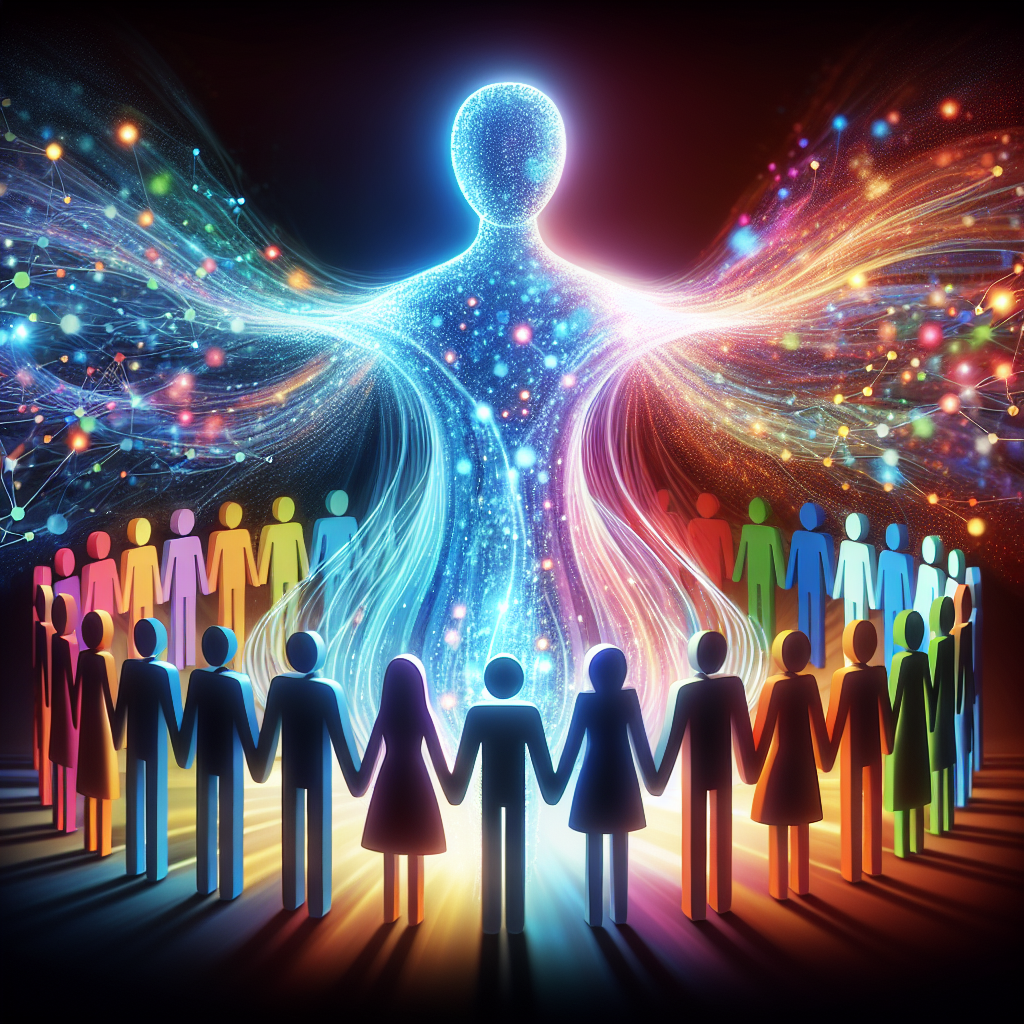Artificial Intelligence (AI) has emerged as a powerful tool in driving positive social change across various sectors. From healthcare to education to environmental sustainability, AI is revolutionizing the way we address societal challenges and improve the quality of life for individuals and communities around the world. In this article, we will explore the power of AI in creating positive social change and its potential to shape a more inclusive and equitable society.
AI in Healthcare
One of the most significant areas where AI is making a positive impact is in healthcare. AI-powered technologies are revolutionizing the way we diagnose, treat, and manage diseases, ultimately improving patient outcomes and reducing healthcare costs. For example, AI algorithms can analyze medical images such as X-rays and MRIs to detect early signs of diseases like cancer, enabling healthcare providers to intervene sooner and save lives.
AI is also being used to personalize treatment plans for patients based on their genetic makeup and medical history, leading to more effective and targeted therapies. Additionally, AI-powered chatbots and virtual assistants are helping patients access healthcare information and support remotely, especially in underserved communities where access to healthcare services may be limited.
Overall, AI is helping healthcare providers deliver better care to more people, ultimately improving health outcomes and reducing healthcare disparities.
AI in Education
AI is also transforming the education sector by personalizing learning experiences and improving educational outcomes for students. AI-powered tools can analyze student data and performance to identify areas where students may need additional support or intervention. This enables teachers to tailor their teaching methods to meet the individual needs of each student, leading to improved academic performance and engagement.
AI is also being used to develop adaptive learning platforms that can adjust the pace and content of lessons based on a student’s learning style and progress. This personalized approach to education helps students learn more effectively and retain information better.
Additionally, AI is helping to bridge the digital divide by providing access to educational resources and opportunities to underserved communities. For example, AI-powered tutoring programs and educational apps can provide students with on-demand support and guidance, regardless of their geographic location or socioeconomic status.
Overall, AI is revolutionizing the way we teach and learn, making education more accessible, engaging, and effective for students of all backgrounds.
AI in Environmental Sustainability
AI is playing a crucial role in addressing environmental challenges and promoting sustainability. AI-powered technologies are being used to monitor and analyze environmental data, such as air and water quality, deforestation rates, and climate change indicators. This data can help policymakers and environmental organizations make informed decisions and develop strategies to protect the environment and combat climate change.
AI is also being used to optimize resource management and energy efficiency in various industries, such as agriculture, transportation, and manufacturing. For example, AI algorithms can analyze data on water usage and crop yields to help farmers make more sustainable farming practices and reduce waste. Similarly, AI-powered transportation systems can optimize routes and reduce emissions, leading to a more sustainable and eco-friendly transportation network.
Overall, AI is helping to create a more sustainable future by empowering individuals and organizations to make data-driven decisions that protect the environment and promote long-term sustainability.
FAQs
Q: How is AI being used to address social inequality and promote social justice?
A: AI is being used to identify and address systemic biases and inequalities in various sectors, such as healthcare, criminal justice, and hiring practices. By analyzing data and identifying patterns of discrimination, AI can help policymakers and organizations develop more equitable policies and practices that promote social justice and equality.
Q: What are some potential challenges and risks associated with the use of AI in creating social change?
A: One potential challenge is the risk of reinforcing existing biases and inequalities through AI algorithms. If not carefully designed and implemented, AI systems can perpetuate discrimination and amplify social inequalities. Additionally, there are concerns about the ethical implications of AI, such as privacy violations, data security risks, and the potential for misuse of AI technologies for malicious purposes.
Q: How can individuals and organizations ensure that AI is used responsibly and ethically to create positive social change?
A: It is essential for individuals and organizations to prioritize ethical considerations and responsible practices when developing and deploying AI technologies. This includes ensuring transparency and accountability in AI systems, addressing bias and discrimination in AI algorithms, and protecting data privacy and security. By promoting ethical AI practices, we can harness the power of AI to create positive social change and build a more inclusive and equitable society.
In conclusion, AI has the potential to drive positive social change by revolutionizing the way we address societal challenges and promote inclusivity and equity. From healthcare to education to environmental sustainability, AI is transforming industries and empowering individuals and organizations to make data-driven decisions that improve the quality of life for people around the world. By harnessing the power of AI responsibly and ethically, we can create a more just, sustainable, and equitable society for future generations.

